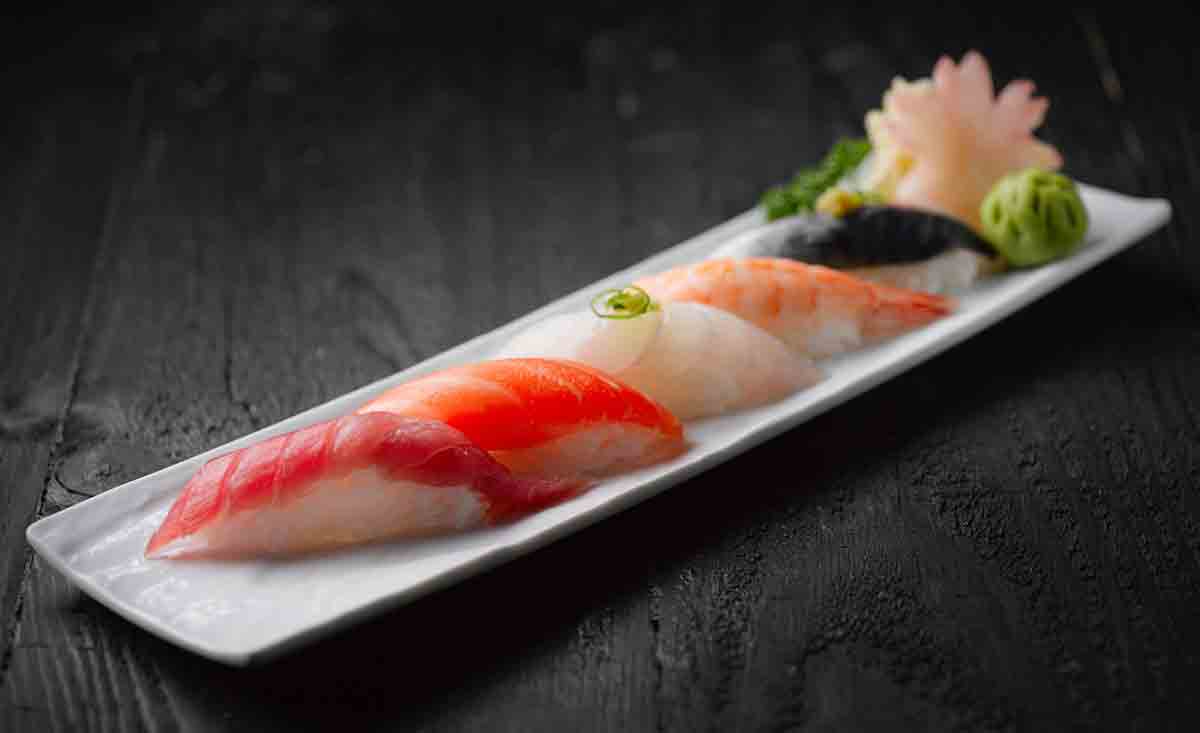
There is no doubt that the fish used to make most sushis is an excellent source of lean protein. And that fatty fish, like salmon, are good brain foods, thanks to their high levels of fatty acids (omega-3).
+ 4 Benefits of Avoiding Meat Consumption
+ How to maintain long hair at any age
The problem is that along with them, Japanese food usually comes with many extras. Like fried tempura, rice, and soy sauce. This makes us think: is sushi healthy?
We consulted Cara Harbstreet, owner of Street Smart Nutrition, to find out what athletes need to know the next time they go to a buffet.
Is Sushi Healthy? What Everyone Says
Sushi is indeed a healthy food, full of nutrients, including proteins, good fats, and carbohydrates.
Evidence 1
Open any Japanese restaurant menu, and you’ll notice that the options are not that varied. Sashimi, for example, is raw fish served alone, making it a healthy option of high-quality protein and fatty acids (and little or no carbohydrates). Nigiri is the raw fish served on top of rice, and maki are traditional sushi rolls that consist of raw or cooked fish and/or vegetables and rice, wrapped in seaweed.
“Overall, most of them are complete from a nutritional point of view,” says Cara Harbstreet. “The amount of proteins, fats, and carbohydrates may differ slightly from one sushi to another, depending on the choice of fish and other additions, including soy sauce.”
Salmon rolls, for example, stand out as a nutritious option for athletes focusing on endurance, explains the nutritionist. They not only provide proteins, fats, and carbohydrates (from rice), but also offer vitamin D, which is crucial for bone health. A quick update: proteins help build muscles, healthy fats are good for the heart, and carbohydrates are your body’s main fuel source – all very important for your performance.
While consuming large amounts of big fish — such as swordfish — can be harmful due to high mercury levels, Cara Harbstreet points out that the western diet doesn’t contain enough fish for you to really worry about substance toxicity.
“Instead of encouraging people to avoid certain types of fish because they have more mercury, I would advocate for more seafood consumption in general,” she says.
Evidence 2
Additionally, according to the Food and Drug Administration of America (FDA), it is recommended to have one to three servings per week of most fish. This includes salmon, albacore, albacore tuna, and shrimp.
One of the biggest nutritional precautions for sushi lovers is actually sodium, thanks to soy sauce and other miso-based dishes that usually accompany it. One tablespoon of traditional soy sauce contains almost 1,000 mg of sodium. According to the American Heart Association, the daily recommended limit is 2,300 mg (but many doctors reduce this number to 1,500 mg).
“Even low-sodium soy sauce can be bad,” says Cara Harbstreet. One tablespoon of low-sodium soy sauce has almost 600 mg of sodium.
It’s worth noting, however, that endurance athletes, like runners, tend to lose a lot of sodium through sweat and need to replace the electrolyte after training. Therefore, they have a little more wiggle room.
Indeed, a small study in the Scandinavian Journal of Medicine and Science in Sports found that athletes who consumed salt capsules and a sports drink (which also contained sodium) during half of the Ironman completed the race 26 minutes faster than the athletes who consumed only the sports drink. Additionally, the same group that consumed extra salt also replaced a larger amount of sodium lost in sweat than those who consumed only the sports drink. Still, overdoing it — more than 4,000 mg per day — can mean trouble for heart and overall health.
What to do then?
One of the best strategies to ensure that your sushi remains healthy is to focus on portion size, paying extra attention to ready-made dishes.
Although people might think that tempura is off-limits, Cara Harbstreet says that if you don’t eat it every night, it’s a good way to include vegetables in the diet for those who aren’t big fans. “It’s a lighter batter than fried chicken or other fried foods,” she says. “But the cooking method is the same. Enjoy it, but don’t eat it as regularly.”
Is Sushi Healthy? The Verdict
It’s hard to say that sushi is bad, especially if you consume it from time to time. Most of it, thanks to rice, offers all the macronutrients that an athlete needs to fuel and recover. And you can accompany it with healthy things.
For example, it’s easy to add fresh vegetables to sushi with a salad. The seaweed that keeps your roll together tastes great, but isn’t as nutritious as it seems. A salad will offer more food volume for hungry athletes and, as sushi is expensive, it can help you feel satisfied.
Cara says that fresh produce is also great sources of potassium, which can actually help to counteract the effects of a sodium-rich diet. And while soy sauce is extremely high in sodium, in the summer months, endurance athletes who lose electrolytes in sweat can actually benefit from it.
For endurance athletes, sushi is healthy and probably the best option for recovery — hello, protein!
“Due to the higher amount of proteins and fatty acids, sushi is a more dense meal,” says Cara Harbstreet. “So if you don’t want to feel sluggish, it may not be a good meal prior to a big workout or race.”

